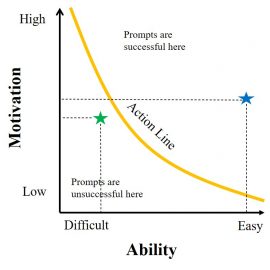

This article is an excerpt from the Shortform book guide to "A Random Walk Down Wall Street" by Burton G. Malkiel. Shortform has the world's best summaries and analyses of books you should be reading.
Like this article? Sign up for a free trial here .
What is a risk tolerance level? What types of investments are best suited to you?
Your risk tolerance level measures how comfortable you are with risk and determines the stocks you should invest in. If you’re nearing retirement (or you want to sleep well at night), you might choose investments with “Low” and “Moderate” levels of risk. If you still have many working years ahead of you (or you’re a thrillseeker who’s willing to suffer sleepless nights), then you might opt for assets with “High” risk levels.
Keep reading to find out your risk tolerance level and recommended investments.
What Is Your Risk Tolerance Level?
All too often new investors will begin researching their options—or, worse, opt into a particular product—without taking the time to think about what they hope to achieve with their investments.
One way to align your goals with the products available is to determine your tolerance for risk.
If you have a high risk tolerance level, you’re likely someone who copes well with stress and enjoys taking risks. If you have a low tolerance level, you’re likely someone who doesn’t enjoy taking risks.
Age is also something to consider when determining your risk tolerance level. If you’re nearing retirement you probably have a low risk tolerance level, but if you’re young and have many working years ahead, you might have a higher risk tolerance level.
Recommended Investments by Risk Tolerance Level
Another consideration is your tax liability and income needs. If you’re currently in a high tax bracket and don’t need to generate income from your investments, you might opt for tax-exempt bonds and low-dividend stocks that promise high capital gains (on which taxes won’t have to be paid until the gains are realized). If you’re in a low tax bracket and need income in the present, taxable bonds and high-dividend stocks are your best bet.
The table below lists the main categories of investment assets, grouped by risk tolerance level. There are more exotic options—fine art, commodities, and hedge funds among others—not included here, but returns on those options are impossible to predict.
| Level of Risk | Asset Type | Expected Rate of Return (Pre-Tax, 2018) | Time to Realize Expected Rate of Return | Notes |
| Very Low Risk Tolerance | Bank checking/savings accounts | 0%–2% | No specific time period to realize return. | Near zero risk of losing your investment. Deposits up to $100,000 guaranteed by FDIC. Likely to be outpaced by inflation. |
| Low Risk Tolerance | Money-market funds | 1%–2% | No specific time period to realize return. | Most offer check-writing. Funds are invested in gov’t securities and bank certificates. Not usually insured. |
| Low Risk Tolerance | Certificates of Deposit (CDs) | 0.5%–2.5% | Funds must be left on deposit for term of certificate. | Early withdrawal of funds is usually subject to penalty. |
| Low Risk Tolerance | Treasury inflation-protected securities (TIPS) | 0.5%–1% plus inflation | Investments must be held until maturity. Securities mature over longer periods (>5 years) | Prices vary if security is sold before maturity. |
| Low/Moderate Risk Tolerance | Highly rated corporate bonds (prime-quality public utilities) | 3.5%–5% | Investments must be held until maturity (anywhere from 5 to 30 years). | Prices vary if security is sold before maturity |
| Moderate/High Risk Tolerance | Diversified common stock portfolio comprising US blue-chip or developed foreign country stocks | 5.5%–7% | No specific time period to realize return. Estimate assumes relatively long investment period. | Returns may in fact be negative in bear markets. Good hedge against inflation in the long run. |
| Moderate/High Risk Tolerance | Real estate | 5.5%–7% | No specific time period to realize return (if REITs). Estimate assumes relatively long investment period. | Returns may in fact be negative in bear markets. Good hedge against inflation in the long run. |
| High Risk Tolerance | Diversified common stock portfolio comprising smaller growth companies | 6.5%–7.5% | No specific time period to realize return. Estimate assumes relatively long investment period. | Returns may in fact be negative in bear markets (risky stock portfolios have lost 50% or more of their value). Good hedge against inflation in the long run. |
| High/Very high Risk Tolerance | Diversified common stock portfolio comprising emerging market stocks | 8%–9% | No specific time period to realize return, but anticipate holding for 10+ years. | Highly volatile. (Value can fluctuate 50%–75% in a year) Returns may in fact be negative in bear markets.. |
| Very High Risk Tolerance | Gold | N/A | No specific time period to realize return. | Highly volatile. Returns are impossible to predict and depend on speculative crazes. Useful as a balance to a diversified portfolio. |
The above risk tolerance level chart will help you determine what stocks you should invest in, depending on your personal risk tolerance level.

———End of Preview———
Like what you just read? Read the rest of the world's best book summary and analysis of Burton G. Malkiel's "A Random Walk Down Wall Street" at Shortform .
Here's what you'll find in our full A Random Walk Down Wall Street summary :
- A comprehensive and entertaining introduction to the world of finance
- Practical investment principles that work for every skill level
- The advantages of index investing






